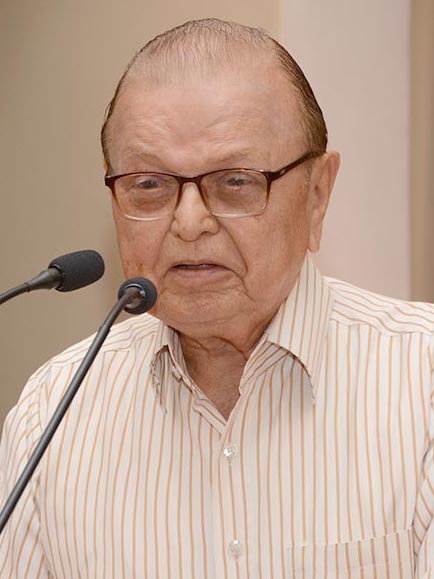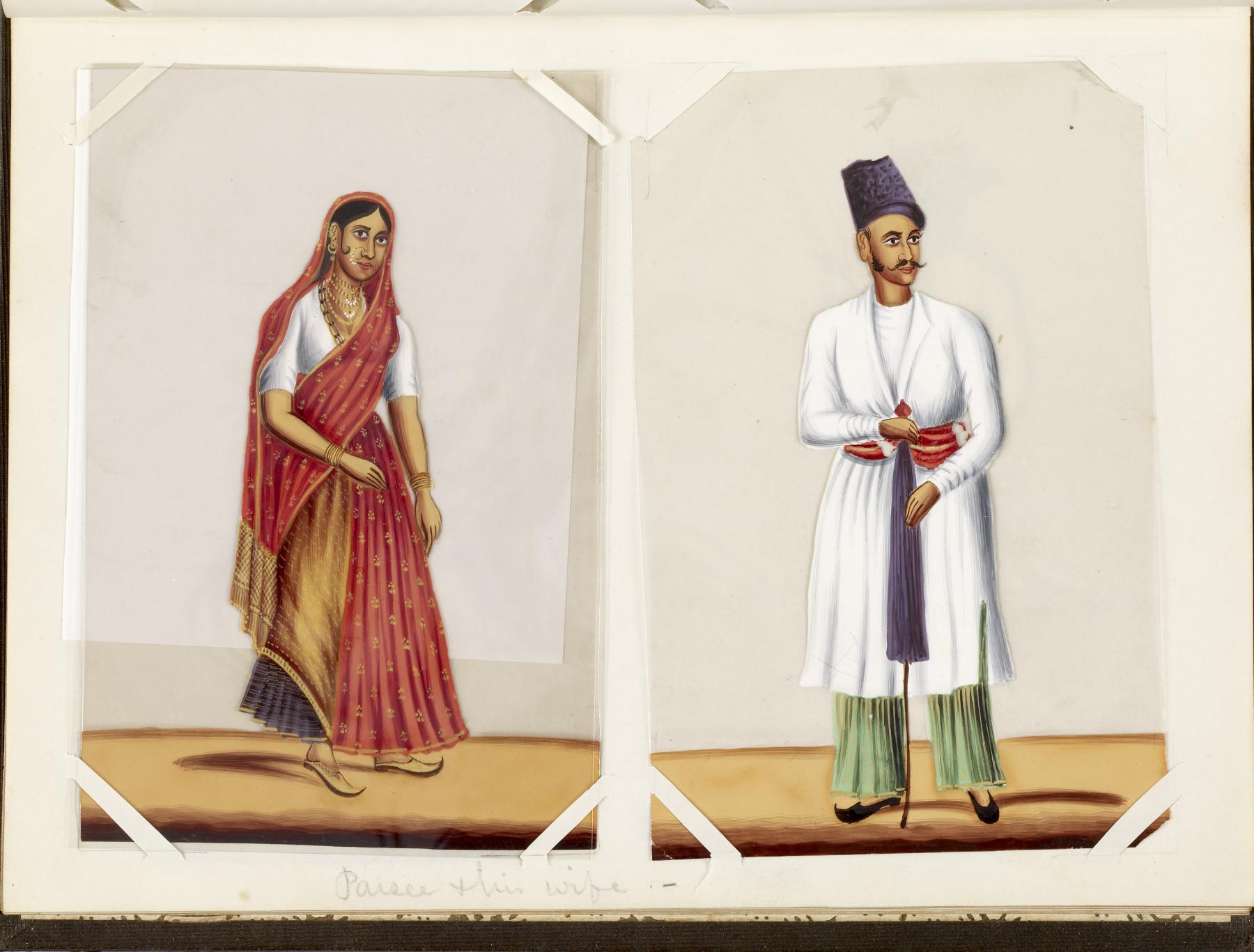|
Yazdi Karanjia
Yazdi Naoshriwan Karanjia (born 3 March 1937, Valsad) is a Gujarati theatre person from India. He is based in Surat and widely noted as one of the doyens of Parsi theatre. For more than 60 years, his troupe has performed comedy plays. With Chandravadan Mehta, he has created ''Tapitate Tapidas'', a comedy radio series on Akashvani, which ran for more than 400 episodes. Later it was also published as a book. Some of his popular comedy plays include ''Bicharo Barjor'', ''Dinshajina Dabba Gul'' and ''Kutarani Punchhadi Vanki''. He rans Cambay Institute of Commerce, a coaching institute. He was awarded with the Padma Shri, the fourth highest civilian award of India India, officially the Republic of India ( Hindi: ), is a country in South Asia. It is the seventh-largest country by area, the second-most populous country, and the most populous democracy in the world. Bounded by the Indian Ocean on the ..., for his services in the field of the arts. He married Vira in 1961 ... [...More Info...] [...Related Items...] OR: [Wikipedia] [Google] [Baidu] |
Shri Yazadi Karanjiya
Shri (; , ) is a Sanskrit term denoting resplendence, wealth and prosperity, primarily used as an honorific. The word is widely used in South and Southeast Asian languages such as Marathi, Malay (including Indonesian and Malaysian), Javanese, Balinese, Sinhala, Thai, Tamil, Telugu, Hindi, Nepali, Malayalam, Kannada, Sanskrit, Pali, Khmer, and also among Philippine languages. It is usually transliterated as ''Sri'', ''Sree'', ''Shri'', Shiri, Shree, ''Si'', or ''Seri'' based on the local convention for transliteration. The term is used in Indian subcontinent and Southeast Asia as a polite form of address equivalent to the English "Mr." in written and spoken language, but also as a title of veneration for deities or as honorific title for local rulers. Shri is also another name for Lakshmi, the Hindu goddess of wealth, while a ''yantra'' or a mystical diagram popularly used to worship her is called Shri Yantra. Etymology Monier-Williams Dictionary gives the meaning of ... [...More Info...] [...Related Items...] OR: [Wikipedia] [Google] [Baidu] |
Valsad
Valsad (Pronunciation: ‹alsÉ‘É– (Gujarati: વલસાડ), historically known as Bulsar, is a city and a municipality in Valsad district of the Indian state of Gujarat. It is the district headquarters of Valsad district. The city of Valsad is located in the south of Navsari and Surat. Etymology The name "Valsad" derives from ''vad-saal'', a Gujarati language compound meaning "covered (''saal'') by banyan trees (''vad'')" (the area was naturally rich in banyan trees). During British Raj, it was historically known as "Bulsar". Geography Valsad is located at . It has an average elevation of 13 metres (42 feet). The old city is about 4 km inland from the Arabian sea. Climate Valsad has a tropical savanna climate (Aw) with little to no rainfall from October to May and very heavy to extremely heavy rainfall from June to September when it is under the direct influence of the Arabian Sea branch of the South-west monsoon. Demographics As of the ... [...More Info...] [...Related Items...] OR: [Wikipedia] [Google] [Baidu] |
Surat
Surat is a city in the western Indian state of Gujarat. The word Surat literally means ''face'' in Gujarati and Hindi. Located on the banks of the river Tapti near its confluence with the Arabian Sea, it used to be a large seaport. It is now the commercial and economic center in South Gujarat, and one of the largest urban areas of western India. It has well-established diamond and textile industry, and is a major supply centre for apparels and accessories. About 90% of the world's diamonds supply are cut and polished in the city. It is the second largest city in Gujarat after Ahmedabad and the eighth largest city by population and ninth largest urban agglomeration in India. It is the administrative capital of the Surat district. The city is located south of the state capital, Gandhinagar; south of Ahmedabad; and north of Mumbai. The city centre is located on the Tapti River, close to Arabian Sea. Surat will be the world's fastest growing city from 2019 to 2035, ... [...More Info...] [...Related Items...] OR: [Wikipedia] [Google] [Baidu] |
Parsi Theatre
Parsi theatre is a generic term for an influential theatre tradition, staged by Parsis, and theatre companies largely-owned by the Parsi business community, which flourished between 1850 and 1930s. Plays were primarily in the Hindustani language (especially the Urdu dialect), as well as Gujarati to an extent. After its beginning in Bombay, it soon developed into various travelling theatre companies, which toured across India, especially north and western India (now Gujarat and Maharashtra), popularizing proscenium-style theatre in regional languages. Entertainment-driven and incorporating musical theatre and folk theatre, in early 1900s, some Parsi theatre producers switched to new media like bioscope and subsequently many became film producers. The theatre diminished in popularity, with arrival of talkies era in Hindi cinema in 1930s. Post-independence, it experienced a revival in the 1950s, much like theatre in the rest of the India. History The British community in Bombay ha ... [...More Info...] [...Related Items...] OR: [Wikipedia] [Google] [Baidu] |
Chandravadan Mehta
Chandravadan Chimanlal Mehta (6 April 1901 – 4 May 1991), popularly known as C. C. Mehta or Chan. Chi. Mehta, was a Gujarati playwright, theatre critic, bibliographer, poet, story writer, autobiographer, travel writer and broadcaster from Vadodara, Gujarat, India. Biography Chandravadan Mehta was born on 6 April 1901 in Surat. His primary education was in Vadodara and secondary education in Surat. He matriculated in 1919 and completed B. A. in Gujarati from the Elphinstone College, Bombay (now Mumbai) in 1924. In 1928, he joined Mahatma Gandhi in the Bardoli Satyagraha. He also joined ''Navbharat'' daily as an editor in 1928. From 1933 to 1936, he taught at New Era High School, Mumbai. He joined the All India Radio (AIR)-Bombay in 1938 and became the director of AIR- Ahmedabad in 1954. During his tenure, he developed the broadcasting culture in Gujarat, wrote and produced several radio plays and documentaries with directors like Adi Marzban and others. After retirement, he wa ... [...More Info...] [...Related Items...] OR: [Wikipedia] [Google] [Baidu] |
Akashvani (radio Broadcaster) '', a 2013 Hindi romance film
{{disambiguation ...
Akashvani may refer to: * Akashvani (radio broadcaster), previously known as All India Radio * Akashvani (word), a Sanskrit term commonly used in Hindu mythology See also * ''Akaash Vani ''Akaash Vani'' is a 2013 Hindi film industry, Hindi romantic drama film directed by Luv Ranjan, and produced by Kumar Mangat Pathak and Abhishek Pathak under the banner of Wide Frame Pictures. This is the second collaboration between the prod ... [...More Info...] [...Related Items...] OR: [Wikipedia] [Google] [Baidu] |
Padma Shri
Padma Shri (IAST: ''padma śrī''), also spelled Padma Shree, is the fourth-highest civilian award of the Republic of India, after the Bharat Ratna, the Padma Vibhushan and the Padma Bhushan. Instituted on 2 January 1954, the award is conferred in recognition of "distinguished contribution in various spheres of activity including the arts, education, industry, literature, science, acting, medicine, social service and public affairs". It is awarded by the Government of India every year on India's Republic Day. History Padma Awards were instituted in 1954 to be awarded to citizens of India in recognition of their distinguished contribution in various spheres of activity including the arts, education, industry, literature, science, acting, medicine, social service and public affairs. It has also been awarded to some distinguished individuals who were not citizens of India but did contribute in various ways to India. The selection criteria have been criticised in some qu ... [...More Info...] [...Related Items...] OR: [Wikipedia] [Google] [Baidu] |
India
India, officially the Republic of India ( Hindi: ), is a country in South Asia. It is the seventh-largest country by area, the second-most populous country, and the most populous democracy in the world. Bounded by the Indian Ocean on the south, the Arabian Sea on the southwest, and the Bay of Bengal on the southeast, it shares land borders with Pakistan to the west; China, Nepal, and Bhutan to the north; and Bangladesh and Myanmar to the east. In the Indian Ocean, India is in the vicinity of Sri Lanka and the Maldives; its Andaman and Nicobar Islands share a maritime border with Thailand, Myanmar, and Indonesia. Modern humans arrived on the Indian subcontinent from Africa no later than 55,000 years ago., "Y-Chromosome and Mt-DNA data support the colonization of South Asia by modern humans originating in Africa. ... Coalescence dates for most non-European populations average to between 73–55 ka.", "Modern human beings—''Homo sapiens''—originated in Africa. Th ... [...More Info...] [...Related Items...] OR: [Wikipedia] [Google] [Baidu] |
1937 Births
Events January * January 1 – Anastasio Somoza GarcÃa becomes President of Nicaragua. * January 5 – Water levels begin to rise in the Ohio River in the United States, leading to the Ohio River flood of 1937, which continues into February, leaving 1 million people homeless and 385 people dead. * January 15 – Spanish Civil War: Second Battle of the Corunna Road ends inconclusively. * January 20 – Second inauguration of Franklin D. Roosevelt: Franklin D. Roosevelt is sworn in for a second term as President of the United States. This is the first time that the United States presidential inauguration occurs on this date; the change is due to the ratification in 1933 of the Twentieth Amendment to the United States Constitution. * January 23 – Moscow Trials: Trial of the Anti-Soviet Trotskyist Center – In the Soviet Union 17 leading Communists go on trial, accused of participating in a plot led by Leon Trotsky to overthrow Joseph Stalin's regime, and ... [...More Info...] [...Related Items...] OR: [Wikipedia] [Google] [Baidu] |
Parsi People
Parsis () or Parsees are an ethnoreligious group of the Indian subcontinent adhering to Zoroastrianism. They are descended from Persians who migrated to Medieval India during and after the Arab conquest of Iran (part of the early Muslim conquests) in order to preserve their Zoroastrian identity. The Parsi people comprise the older of the Indian subcontinent's two Zoroastrian communities vis-Ã -vis the Iranis, whose ancestors migrated to British-ruled India from Qajar-era Iran. According to a 16th-century Parsi epic, '' Qissa-i Sanjan'', Zoroastrian Persians continued to migrate to the Indian subcontinent from Greater Iran in between the 8th and 10th centuries, and ultimately settled in present-day Gujarat after being granted refuge by a local Hindu king. Prior to the 7th-century fall of the Sassanid Empire to the Rashidun Caliphate, the Iranian mainland (historically known as 'Persia') had a Zoroastrian majority, and Zoroastrianism had served as the Iranian state religi ... [...More Info...] [...Related Items...] OR: [Wikipedia] [Google] [Baidu] |
Gujarati People
The Gujarati people or Gujaratis, are an Indo-Aryan ethnolinguistic group who reside in or can trace their ancestry or heritage to the present-day western Indian state of Gujarat. They primarily speak Gujarati, an Indo-Aryan language. While Gujaratis mainly inhabit Gujarat, they have a diaspora worldwide. Gujaratis in India and the diaspora are prominent entrepreneurs and industrialists and maintain high levels of social capital. Many notable independence activists were Gujarati, including Gandhi, Patel, and Jinnah, as well as the current Prime Minister of India, Narendra Modi. Geographical locations Despite significant migration primarily for economic reasons, most Gujaratis in India live in the state of Gujarat in Western India. Gujaratis also form a significant part of the populations in the neighboring metropolis of Mumbai and union territory of Dadra and Nagar Haveli and Daman and Diu, which was a former Portuguese colony. There are very large Gujarati immigrant com ... [...More Info...] [...Related Items...] OR: [Wikipedia] [Google] [Baidu] |





